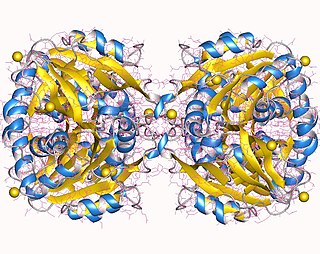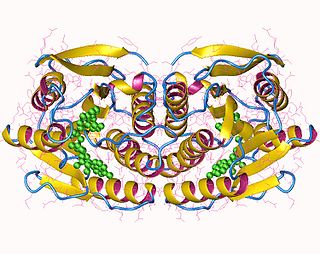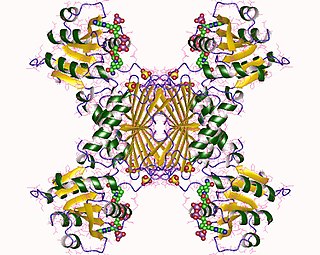This article includes a list of references, related reading, or external links, but its sources remain unclear because it lacks inline citations .(March 2021) |
| Anthocyanidin reductase | |||||||||
|---|---|---|---|---|---|---|---|---|---|
| Identifiers | |||||||||
| EC no. | 1.3.1.77 | ||||||||
| CAS no. | 93389-48-1 | ||||||||
| Databases | |||||||||
| IntEnz | IntEnz view | ||||||||
| BRENDA | BRENDA entry | ||||||||
| ExPASy | NiceZyme view | ||||||||
| KEGG | KEGG entry | ||||||||
| MetaCyc | metabolic pathway | ||||||||
| PRIAM | profile | ||||||||
| PDB structures | RCSB PDB PDBe PDBsum | ||||||||
| |||||||||
In enzymology, an anthocyanidin reductase (EC 1.3.1.77) is an enzyme that catalyzes the chemical reaction
- a flavan-3-ol + 2 NAD(P)+ an anthocyanidin + 2 NAD(P)H + H+
The 3 substrates of this enzyme are flavan-3-ol, NAD+, and NADP+, whereas its 4 products are anthocyanidin, NADH, NADPH, and H+.
This enzyme belongs to the family of oxidoreductases, specifically those acting on the CH-CH group of donor with NAD+ or NADP+ as acceptor. The systematic name of this enzyme class is flavan-3-ol:NAD(P)+ oxidoreductase. Other names in common use include AtANR, and MtANR. This enzyme participates in flavonoid biosynthesis.







